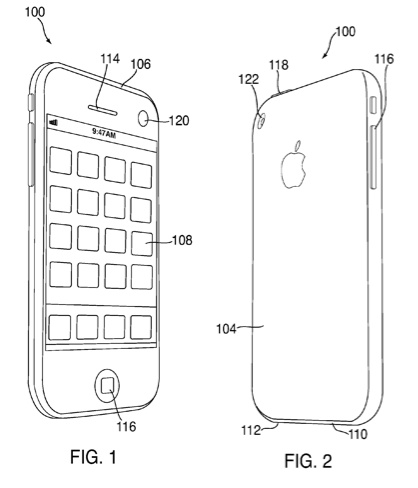An Apple patent (number 20110293094) for a "digital handshake" between devices shows that Apple is looking at new ways sharing data between handheld devices -- and perhaps Macs.
The patent is is directed to a digital handshake for establishing a secure communications path between two electronic devices. Each device can capture an image of the other device using a camera (e.g., a front facing camera or a back facing camera) and extract, from the captured image, a key or seed associated with the other device.
For example, each device can display a seed to be identified from an image taken by the other device. Using the extracted keys or seeds, each device can generate, using a same process, an identical digital handshake key. The digital handshake key can then be used to define a secure communications path between the two devices and share information securely.
In some embodiments, a digital handshake key can be shared among several devices to create a multi-device secure communications path. Once a communications path has been established, the devices in the path can be identified and authenticated from the digital handshake key to receive access to secured goods, services or information.The inventors are Marcel Van OS and Caroline Cranfill.
Here's Apple's background on the invention: "As portable electronic devices increasingly have more functionality and become more available, more users may own such devices. The devices can be used to store any suitable information, including for example, media, application data (e.g., contacts or calendar events), text and number documents, or combinations of these. In some cases, the devices can operate one or more applications that can provide particular functionality to the user of the device.
"For example, applications can relate to one or more of games, e-books, business, education, finance, healthcare, lifestyle, navigation, news, productivity, reference, social networking, sports, utilities, travel, and weather. Using the electronic devices, users can generate or access information (e.g., data or application displays) that a user may wish to share with others.
"Users can share information using several different approaches. In some cases, a user can show an electronic device display to another user, so that the other user can copy off of the display. This approach, however, fails to take advantage of the fact that the other user may have an electronic device as well. In some other cases, a user can send an email, text or media message, or other message over a communications link, where the information to share is incorporated in the message. The receiving user can then view the information from communication, and copy and paste the information as desired.
"In some cases, two electronic devices can instead or in addition form a direct communications path. For example, two electronic devices can share a key over a communications network (e.g., a passkey in a Bluetooth® network), and establish a secure communications path. As another example, two electronic devices can detect a same or similar accelerometer output, and use the accelerometer output as a key to secure a communications path. These approaches, however, can require a user to generate or enter a key, or require a particular component in the device (e.g., an accelerometer or other sensor).
"Once two electronic devices share a common communications path, the electronic devices can share different data. For example, the devices can share information on an application level (e.g., share application data between two instances of an application operating on different devices). In particular, photos, contacts, or calendar events can be shared by an application."
-- Dennis Sellers














